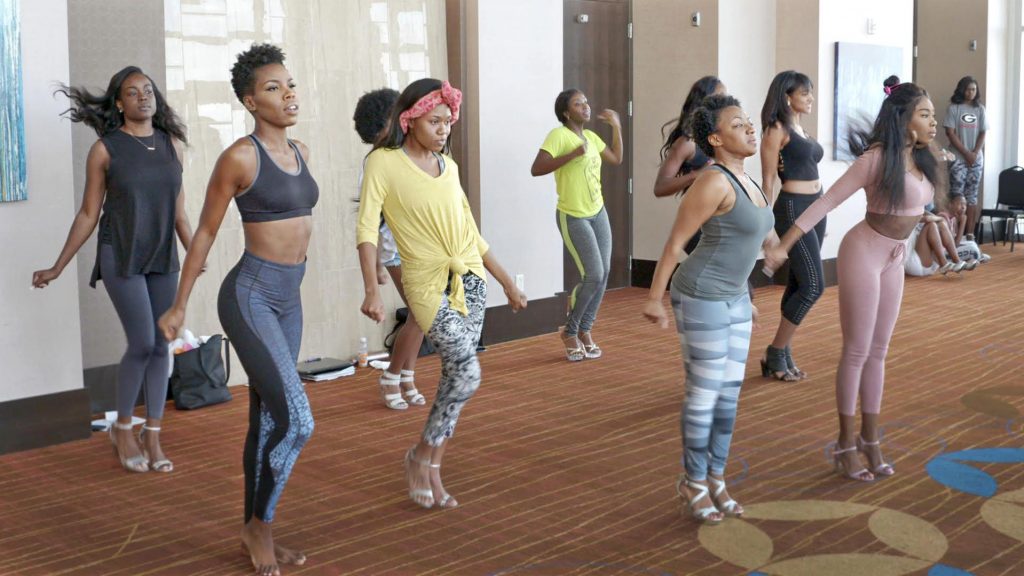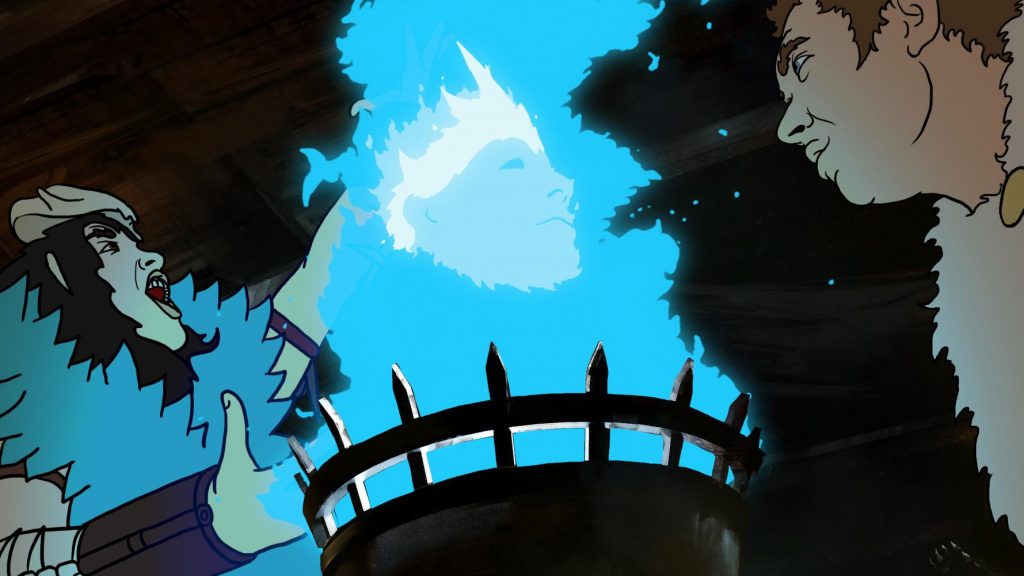Though proceedings may have shifted to a virtual setting for the second year in a row, that presentation hasn’t deterred high-profile indie projects from making their debut at the South by Southwest Film Festival. A number of major projects ranging from an animated fantasy adventure to a contemplative drama about dealing with trauma have found home at this event.
Let’s get right down to unpacking these motion pictures. The first is a documentary looking at the inherently troublesome way America defines beauty:
Subjects of Desire

It’s no state secret that America’s beauty standards are inherently made to discriminate against Black women.
Look around at any gigantic billboard or pop culture property and you’ll see evidence of this phenomenon staring at you right in the eyes. The documentary Subjects of Desire explores the stereotypes Black women are forced into; in the process stripping the autonomy of this marginalized group. This wide-ranging doc also takes time to explore the hypocrisy of modern fashion that glorifies aspects of Black culture so long as they appear on white women.
Writer-director Jennifer Holness is tackling a lot of urgently important topics in Subjects of Desire; several of which are tackled in a thoughtful manner that untangles finer intricacies of how pop culture presents Black women. For instance, Hattie McDaniels’ historic Oscar win for Gone with the Wind is noted as a major achievement for Black performers; particularly since it’d be another fifty years before another Black actress would win an Oscar. However, the fact that McDaniels never got to step outside of the Mammy stereotype in her on-screen work underscores this achievement with tragedy.
So entrenched are the stereotypes against Black women that even groundbreaking Black artists are pigeonholed into them.
Other sections of Subjects of Desire are more scattered; a result of the movie trying to do too much at once. A framing device of contestants preparing for a Ms. Black America pageant never amounts to much. There’s also a recurring segment where a group of young Black women talk about their experiences with physical insecurity; resulting in some of the most interesting lines of the entire feature. Unfortunately, the individual participants don’t get fleshed out as their own compelling subjects.
Holness needed either a longer runtime or the format of a miniseries to properly explore all of this territory. At least Subjects of Desire leaves you wanting more rather than leaving you bored; but the crowded nature of the piece ends up making the production far less than the sum of its parts.
The Fallout

It was supposed to be a normal day for Vada.
A quick Starbucks run with her best friend, jokes about farts, struggles to stay awake in class; all the usual jazz. But while washing her hands in the bathroom, Vada (Jenna Ortega) hears an unusual noise. It turns out to be a gunshot. It’s quickly followed by more gunshots, making it apparent that Vada is caught in the middle of a school shooting. In the wake of this event, Vada is like a zombie shuffling through ordinary life. How do you process an event like this? A seemingly normal day has led to horrors that will forever alter Vada’s way of viewing the world.
The Fallout writer-director Megan Park has no problem with how modern teenagers communicate. So many movies placate older audiences by making fun of how teens talk through text or social media. Here, Vada and her classmates use colloquialisms like TY or emojis to engage in small talk throughout their lives; including in the wake of that school shooting. Park translates this authentic quality of 2021 teenagers in a way that doesn’t scream “How do you do, fellow kids?”. Instead, it’s merely a byproduct of Park’s empathetic filmmaking; which is largely used to render the complex ways a teenager like Vada reacts to a school shooting.
Her emphasis on understanding and humanizing Vada’s psyche feeds into several other standout aspects of the film; including the decision to never show the school shooter or people getting shot. This level of restraint is partially to place the audience in the headspace of Vada, who only experiences these horrors from noises she hears in a bathroom stall. But it also ensures The Fallout isn’t a movie where turmoil is exclusively expressed through physical horrors.
It cements that this is a project focused on internal struggles, a quality Park maintains throughout the entire runtime.
This level of thoughtfulness is also carries over into the writing of the supporting cast; like the protagonist’s classmates Mia (Maddie Ziegler) and Nick (Will Ropp). Everyone responds to this event in their own different way. Some, like Nick, become activists, others, like Mia, withdraw from the world entirely. As for Vada, her whole post-shooting exploits are realistically messy. She shuts out from her family, she tries out ecstasy as a way to cope, the crushing of a soda can sends her nerves into overdrive. The edges of Vada’s world aren’t sanded off here, but Park’s empathetic gaze ensures The Fallout never becomes exploitive in depicting her experiences.
Park’s directorial style makes The Fallout a quietly contemplative movie that can also hit you in the gut at a moment’s notice. Moments of nonchalant complacency undercut horrifying reminders of the past at the drop of a hat. That same versatility is in Janna Ortega’s lead performance. She impressively tackles a vast valley of emotions while making each new corner an organic extension of Vada’s trauma. She and Park’s filmmaking truly leave an impact on the viewer.
You won’t be able to shake The Fallout once it’s done, but maybe that’s a good thing. We shouldn’t forget about the real-world horrors movies depict. Nor should we forget that processing trauma is an endless and complex road that can begin on even the most seemingly-normal days.
The Spine of Night

Tzod (Lucy Lawless) has come all the way to the hidden lair protected by The Guardian (Richard E. Grant) for a purpose. This is where The Bloom grows, a powerful blue flower from the Gods that grants whoever wields it immense power. Tzod once used it to simply put on pretty light shows for her people. However, man intruded on her swamp home and took the Bloom for their own nefarious purposes. This is especially true of Ghal-Sur (Jordan Douglas Smith); a scholar who used the Bloom to turn himself into a malevolent God on Earth.
The Spine of Night, written and directed by Philip Gelatt and Morgan Galen King, is largely an anthology movie as Tzod and The Guardian trade stories over their experiences with The Bloom. These yarns take their cues from Robert E. Howard and fellow anthology R-rated 1981 animated fantasy movie Heavy Metal, among other pop culture sources. It’s a treat to see an original R-rated fantasy feature emerge from the American film industry; even if The Spine of Night, like so many anthology pictures, ends up being less than what it seems.
The best segment in The Spine of Night is the Guardian’s story of how he got into his job protecting The Bloom.
It’s the one storyline using a different animation style than the rest of the movie; which lends this section a uniquely trippy quality. However, that kind of variety should have been spread out across the rest of the film. Despite constantly throwing new characters at the audience, The Spine of Night’s extremely grisly carnage quickly gets repetitive. An occasional visual flourish isn’t enough to quell the nagging feeling that the film is occasionally spinning its wheels.
Of course, this is still an R-rated animated film that regularly delivers gruesome deaths, interesting character designs destined to become cosplay staples, and lots of Richard E. Grant monologue. Putting it simply, this is never a slog to sit through and it’ll probably be a hit with college-aged audiences; particularly those watching it while stoned. Still, The Spine of Night functions as an addendum to the pop culture properties that spawned it rather than something that takes it creative inspirations in a new direction. Tzod and The Guardian have plenty of stories to tell, but unfortunately, they’re stories you’ve heard plenty of times before.
Douglas Laman is a freelance writer providing SXSW coverage for Offcultured.
Header: Subjects of Desire
